
JAPANESE PRINTS
A MILLION QUESTIONS
TWO MILLION MYSTERIES
Ukiyo-e Prints浮世絵版画 |
|
Port Townsend, Washington |
|
UTAGAWA YOSHIKAZU fl. 1850 - 70 |
|
|
歌川芳員 |
|
|
うたがわよしかず |
|
|
Subject: View of the Suidobashi at Ochanomizu |
|
|
水道橋 |
御茶ノ水 |
|
すいどうばし |
おちゃのみず |
|
Series Title: Toto Meisho |
|
|
東都名所 |
|
|
とうとめいしょ |
|
|
Size: 9 1/2" x 14 1/8" |
|
|
Date: 6th Month, 1853 |
|
|
Kaei 6 |
|
|
嘉永6 |
|
|
Publisher: Izumiya Ichibei |
|
|
和泉屋市兵衛 |
|
|
いずみやいちべ え |
|
|
Illustrated: |
|
|
Condition: Soiling, some foxing, unbacked, good color. |
|
|
ORIGINALLY $230.00 NOW FOR SALE FOR $160.00 |
|
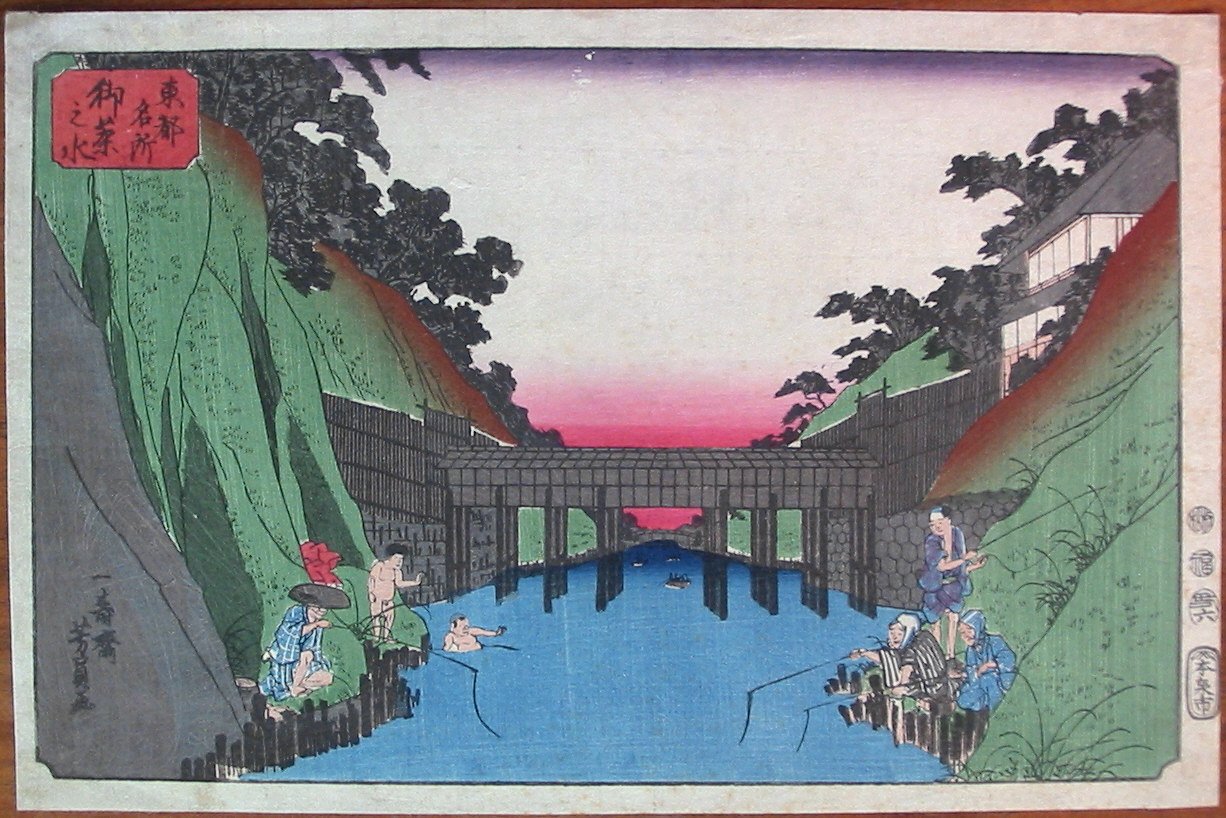
|
|
|
Details from the back of the Yoshikazu print. The baren work is particularly distinctive in the image shown above. |
|
|
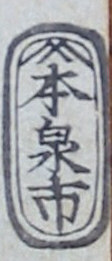 |
 |
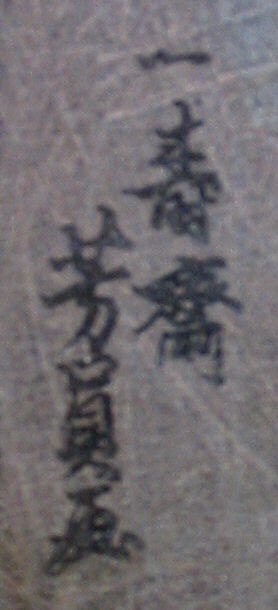 |
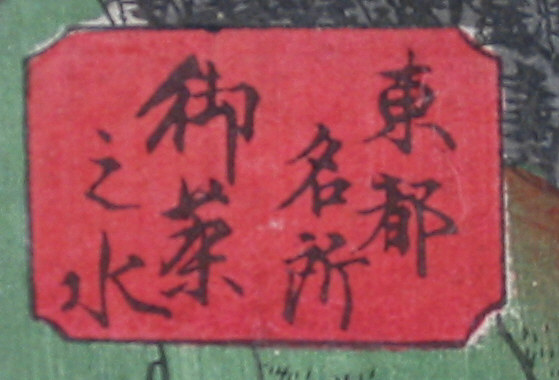 |
|||
|
Publisher's seal: Izumiya Ichibei |
Date/censor seals: 6th month, 1853 |
Artist's signature: Ichijusai (?) Yoshikazu ga |
Toto Meisho: Ochanomizu |
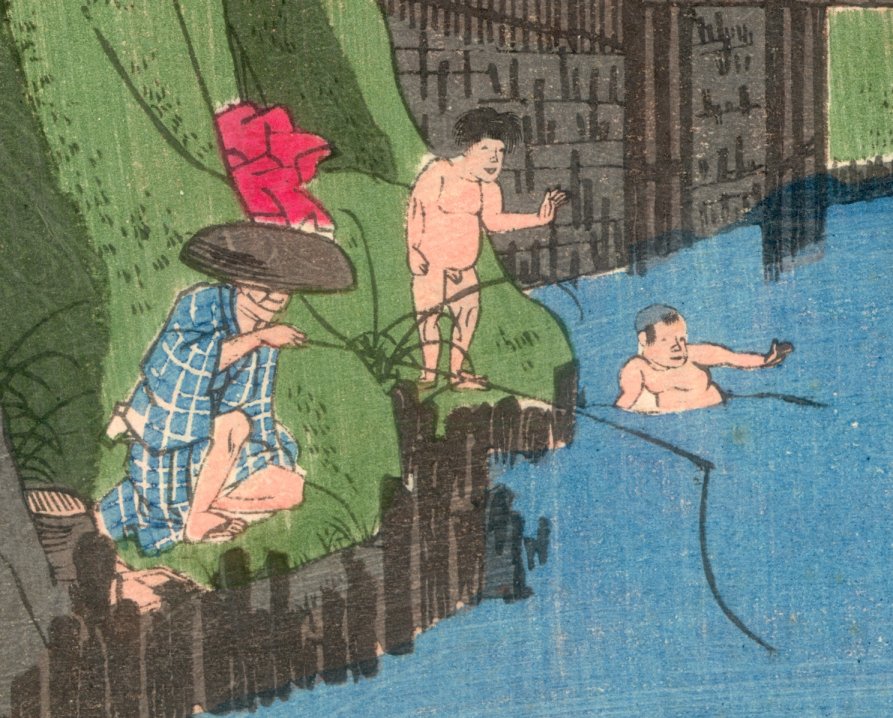 |
||
| Full frontal male nudity in Japanese prints other than the erotica is so rare as to be almost nonexistent. The innocence of this figure is somewhat akin to that of the anatomically correct Ken doll. |
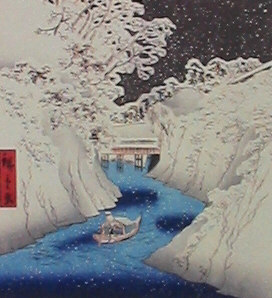 |
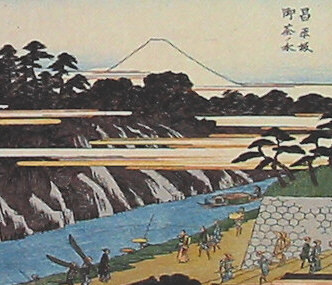 |
|||
| Detail shown above of the Suidobashi in winter by Hiroshige II. |
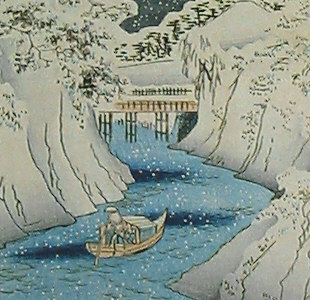 |
The detail shown above is of the "Grand View of Ochanomizu" by Hiroshige, but without the aqueduct visible. |
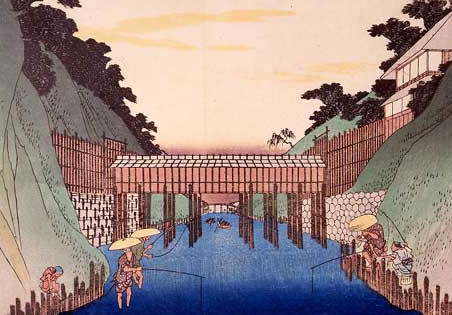 |
|
| Another version above of Ochanomizu by Hiroshige II. |
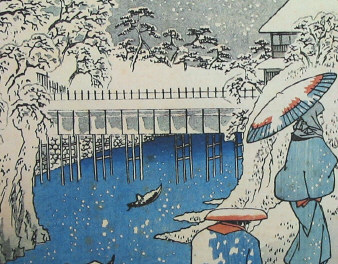 |
Detail above of Ochanomizu by Hiroshige with fishermen. | ||
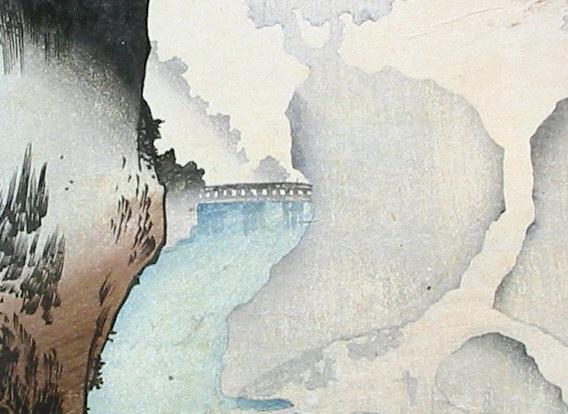 |
Detail above of Ochanomizu by Hiroshige II from 1853. |
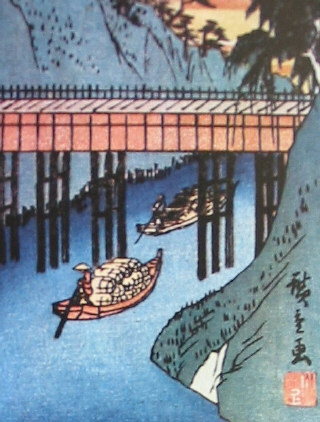 |
||
| This detail above is of a print by Kunisada is said to be of the Suidobashi at Ochanomizu in the mist. |
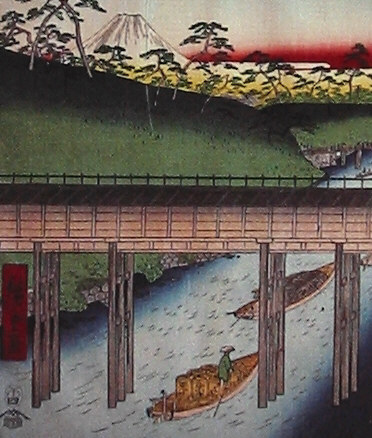 |
The above detail is of boatmen passing below the Suidobashi by Hiroshige. | ||
| And yet another detail above of a version of the aqueduct at Ochanomizu by Hiroshige from 1858. |
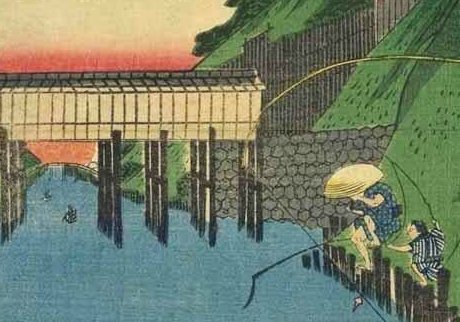 |
|||
| Toyokuni III Ochanomizu detail below. | Hirokage detail above. | |||
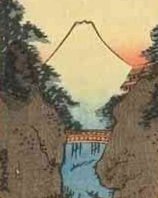 |
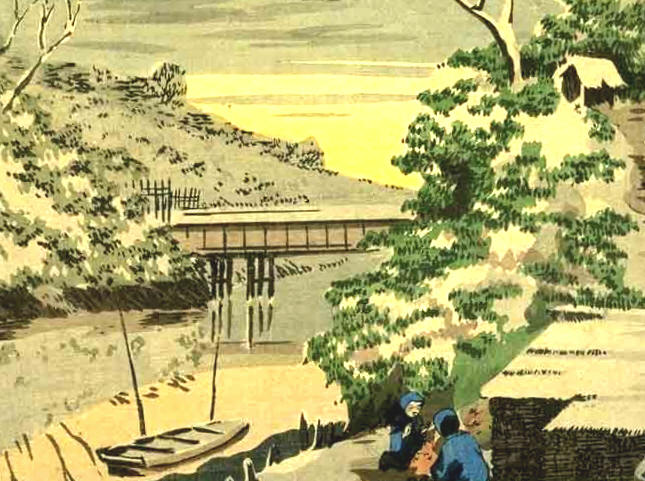 |
|||
| This detail above by Kiyochika certainly betrays its modernist feel. |
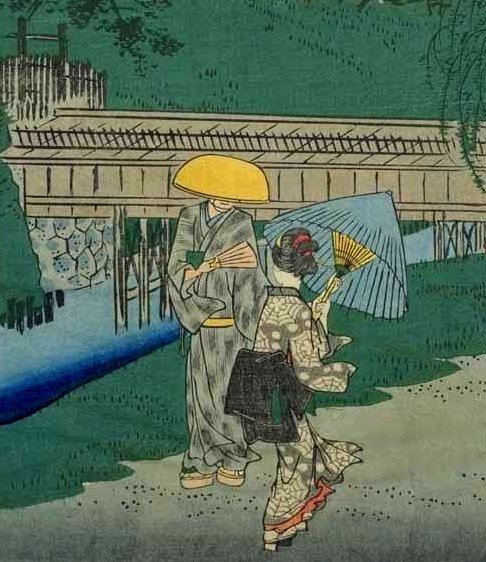 |
||
| Ochanomizu Means Tea Water | ||
|
One of the joys of working with Japanese prints is not only the aesthetics, but also the mystery. As Rod Stewart said: "Every picture tells a story, don't it?" And sure enough this is true to the 'nth' degree when it comes to Ukiyo-e.
When I first purchased this print I wondered about the structure spanning the Kanda River. I didn't know that it was the Kanda at that point and certainly didn't know that it was a man made channel. Tokugawa Ieyasu chose the small fishing village of Edo to be the shogunal capitol. Although he never lived there he was fully aware of the structural changes which would be needed to make this a great center. A channel here, a drainage system there --- all of this laid the groundwork for metropolitan Tokyo as we know it today.
Like all city planners special attention had to made to supply an ever growing population with fresh water. Hence the structure above, an aqueduct, brought a particularly distinctive water source to this part of the community. In fact, the entire district came to be named after this especially delicious and pure agua: Ochanomizu or tea water. |
||
|
|
||
| The Suidobashi or Aqueduct Bridge | ||
|
The Suidobashi or aqueduct bridge was a wooden structure built during the Manji period (1658-60) to bring fresh drinking water from Inokashira to the ever burgeoning Edo. It was originally referred to as the Mannen or Ten Thousand Year aqueduct because it was meant to last for a very long time. This Suidobashi not only carried fresh water but also operated as a foot bridge. Today there is a modern bridge called the Suidobashi in the same location, but the aqueduct has long since disappeared. |
||
|
|
||
| There is a Japanese poem which says the aqueduct brings the water for the first bath of Spring. | ||
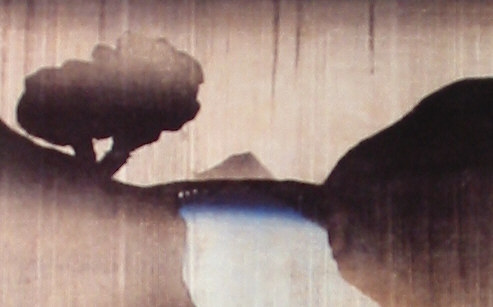 |
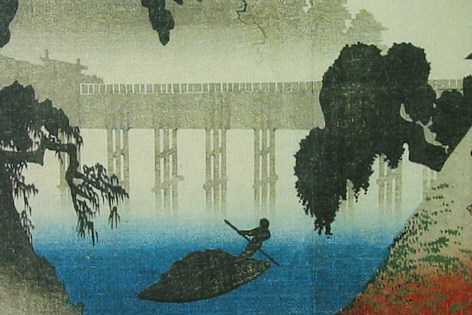 |
|
| I may be somewhat fickle, but this detail of the Suidobashi at Ochanomizu by Kuniyoshi may well be might favorite. To each his own. | Hiroshige Ochanomizu detail above. |
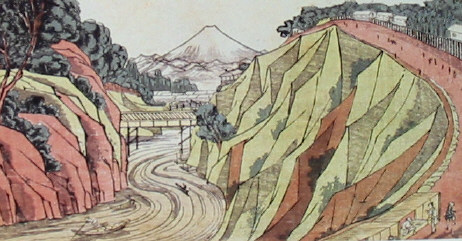 |
||||
| Above is a detail of the earliest representation of the aqueduct at Ochanomizu that I am aware of. It is by Hokuju. The detail of a print by Eisen below may be the second earliest unless it is one of the early Hiroshiges. In either case the Eisen or the Hiroshige would have been created twenty to thirty years later than the Hokuju. | ||||
_dtl.jpg) |
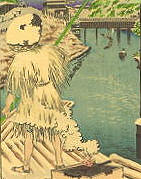 |
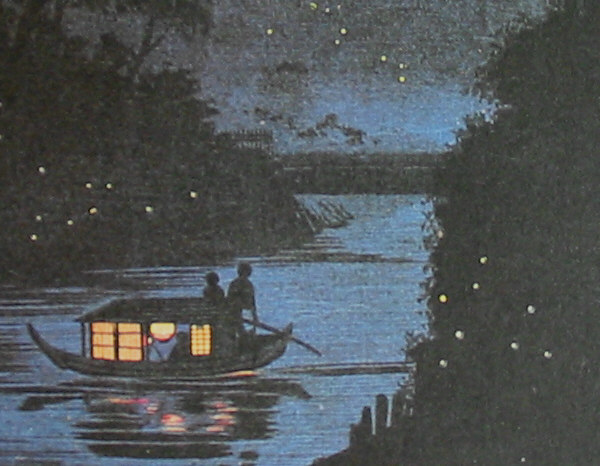 |
|
| Above is another image of the Suidobashi at Ochanomizu in the winter by Kiyochika. | Detail of a nighttime view of the aqueduct at Ochanomizu with fireflies by Kiyochika. |
|
Direct purchase may be made through check or money order or by payment through PayPal.
Contact us if you are interested. |
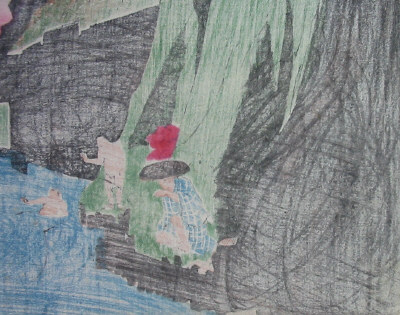
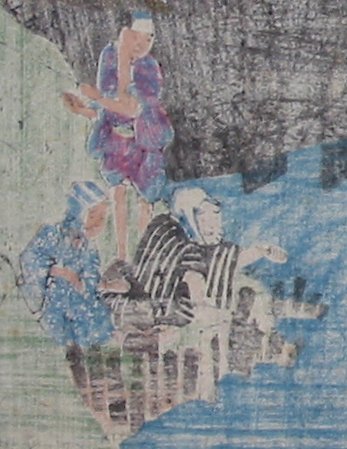
 HOME
HOME